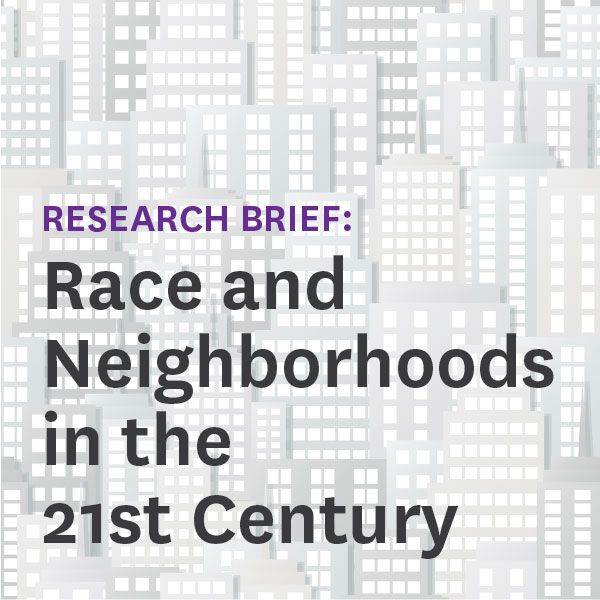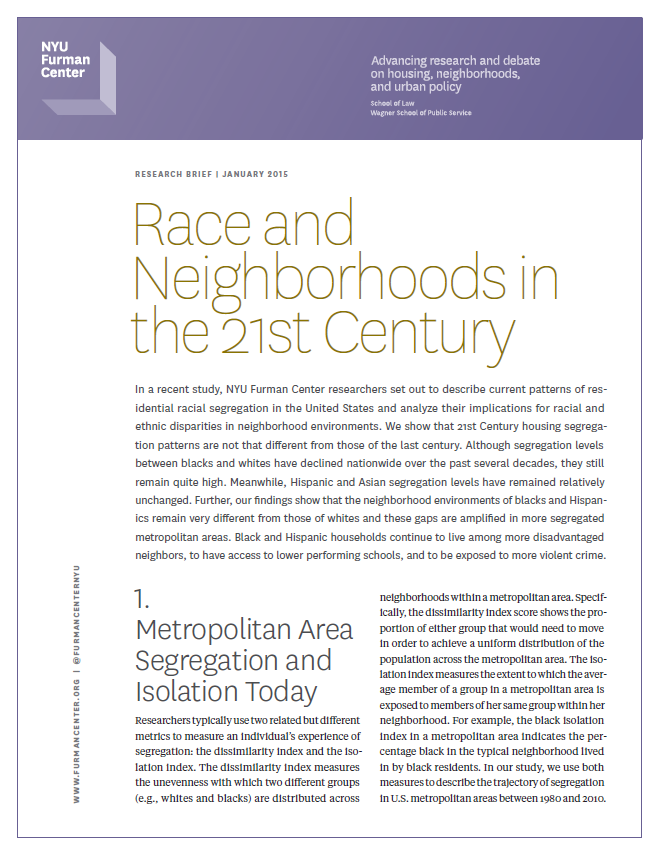
Research Brief: Race and Neighborhoods in the 21st Century

Nationwide, minority groups and whites continue to live in highly unequal neighborhoods, according to a new research brief by the NYU Furman Center.
The brief, Race and Neighborhoods in the 21st Century (PDF), outlines the findings of a broader empirical study that examined national patterns of segregation between the years 1980 and 2010. The research finds that U.S. minority groups and whites continue to live in highly unequal neighborhoods.
 The research finds that while segregation between blacks and whites has declined over the past several decades, it remains quite high. Among Hispanics and Latinos, segregation levels saw little change from 1980 to 2010.
The research finds that while segregation between blacks and whites has declined over the past several decades, it remains quite high. Among Hispanics and Latinos, segregation levels saw little change from 1980 to 2010.
The research shows large gaps remain between black and Hispanic neighborhoods versus white neighborhoods in terms of services and conditions, such as schools and safety. Black and Hispanic households tend to live in neighborhoods with higher poverty rates, fewer college-educated neighbors, lower-performing schools, and higher violent crime rates. Moreover, these differences in neighborhood conditions are amplified in more segregated metropolitan areas.
The research brief builds on a working paper written by NYU Furman Center Faculty Director Ingrid Gould Ellen, Research Fellow Jorge De la Roca, and affiliated faculty member Katherine M. O’Regan. That paper, titled “Race and neighborhoods in the 21st century: What does segregation mean today?” (PDF) responded to claims that racial segregation is a declining concern in the 21st century, noting the persistent levels of segregation across many communities and that both blacks and Hispanics continue to live among more disadvantaged neighbors. This paper was published in 2014 in the Regional Science and Urban Economics journal.
___________________
Read the research brief, Race and Neighborhoods in the 21st Century (PDF)
Read the working paper, Race and neighborhoods in the 21st century: What does segregation mean today? (PDF)
Learn more about the dynamics and impacts of neighborhood and school segregation in the year-long “slow debate” series, The Dream Revisited.


